From Slogans to Reality: Are Women in India Truly Empowered?
“Empowering women is a prerequisite for creating a good nation, when women are empowered, a society with stability is assured. Empowerment of women is essential as their value system leads to the development of a good family, society and ultimately a good nation.”
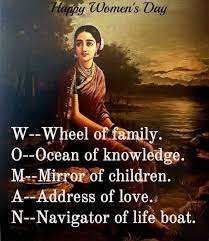
Context:
- Every year on March 8, Women's Day is observed and this year, it falls on Saturday.
- International Women's Day in 2025 will have the theme "For ALL Women and Girls: Rights. Equality. Empowerment."
- In order to achieve a feminist future in which all people are treated equally, this year's theme urges action to unlock equal rights, power, and opportunities for women.
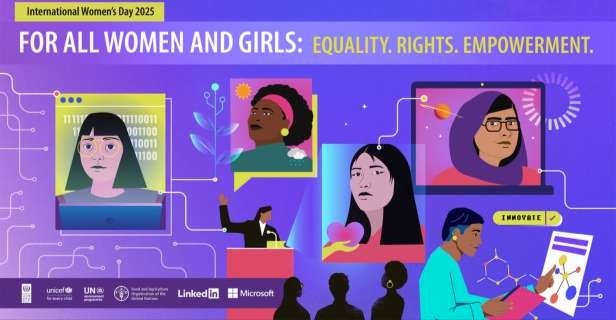
1.
What is the historical status of women in India?
| Gender Sensitization in Ancient Period | |||
|---|---|---|---|
| Vedic | Epic | Smriti | Sanskrit |
| Equal right and status | Women were respected honour and righteous | Obedient meet and shy personality | NI |
| NI | Lower status and dignity in lower class | NI | NI |
| Dependency of women on male partner about marriage | Dependency of women on male partner about matter related to marriage | Dependency of female on male partner for all matter | Male dominance |
| Equality in education | Partial dependency in education and other affair | No freedom in any sphere | No freedom in any sphere |
| Subordinate position after marriage | Women honoured as idle wife | Inferior position | Equality in treatment in men and women regarding facility and resources |
| Helped each other in routine work | Active participation of women in social and religious function | No sacrifice allowed | NI |
| Birth of daughter was undesirable in global cast | NI | Religious ritual not allowed | NI |
| NI→ No Information available | |||
| Time period | Analysis |
|---|---|
| Ancient: 1.Vedic period |
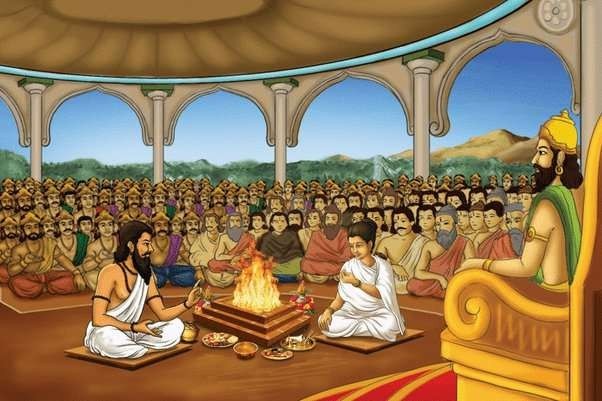
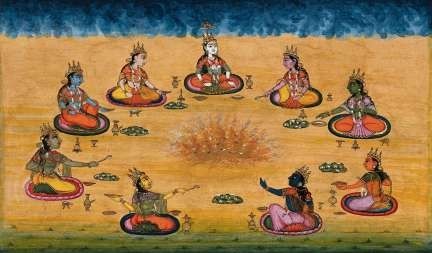
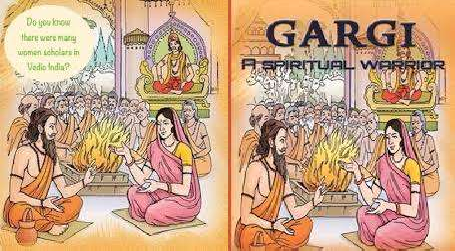 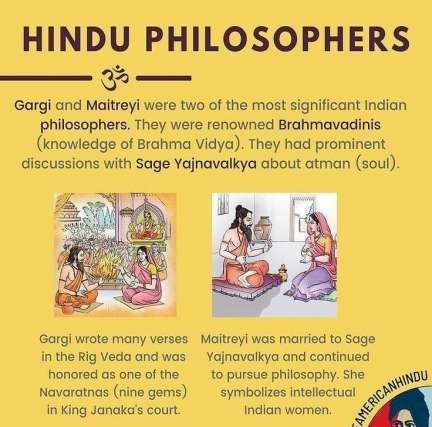 |
| 2. Post Vedic Period |
|
| Medieval period |

|
| Socio-Religious Reforms Movements (19th Century) |
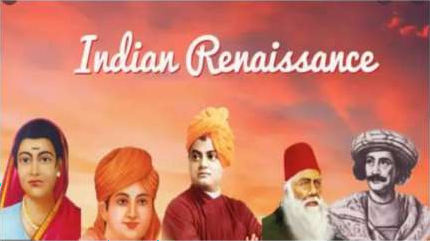
 |
| Freedom Movement |
 |
| PostIndependence India |
|

2.
What is the status of women empowerment in India?
- India dropped to 129th place in the World Economic Forum's Global Gender Gap Index 2024, while Iceland retained the top spot.
- This puts India in the bottom 20 countries on the index.
- India closed 64.1 per cent of its gender gap in 2024, ranking the third lowest in the southeast region, only ahead of Maldives and Pakistan.
- Despite doing relatively well in the political empowerment parameter (65th) as compared to the other three indices, India‟s overall rank is 129th, marginally lower than last year (127).
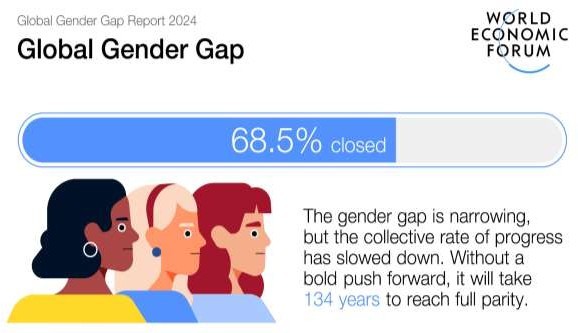
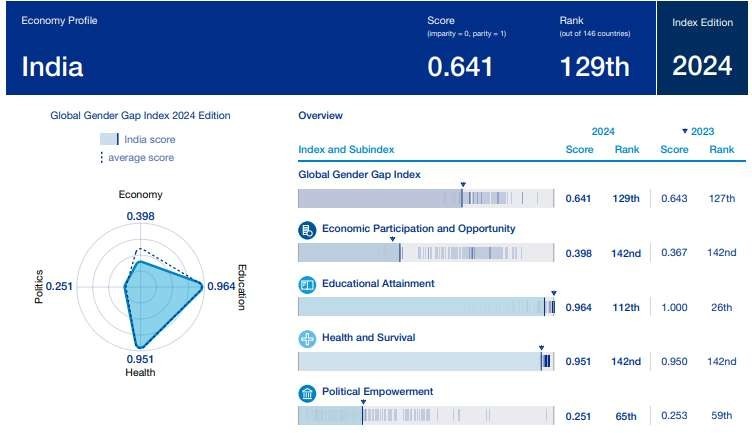

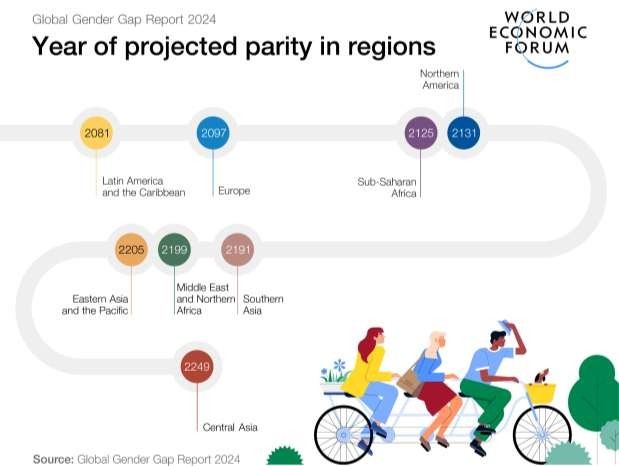
3.
What is the status of women in the workforce in India?
- According to the Periodic Labour Force Survey (PLFS) 2022-2023, the female labor force participation rate in India increased to 37.0% in 2023, which is a significant jump from 23.3% in 2017-18.
- This is attributed to the government's initiatives to empower women through policies and legislations that focus on their longterm socio-economic and political development.

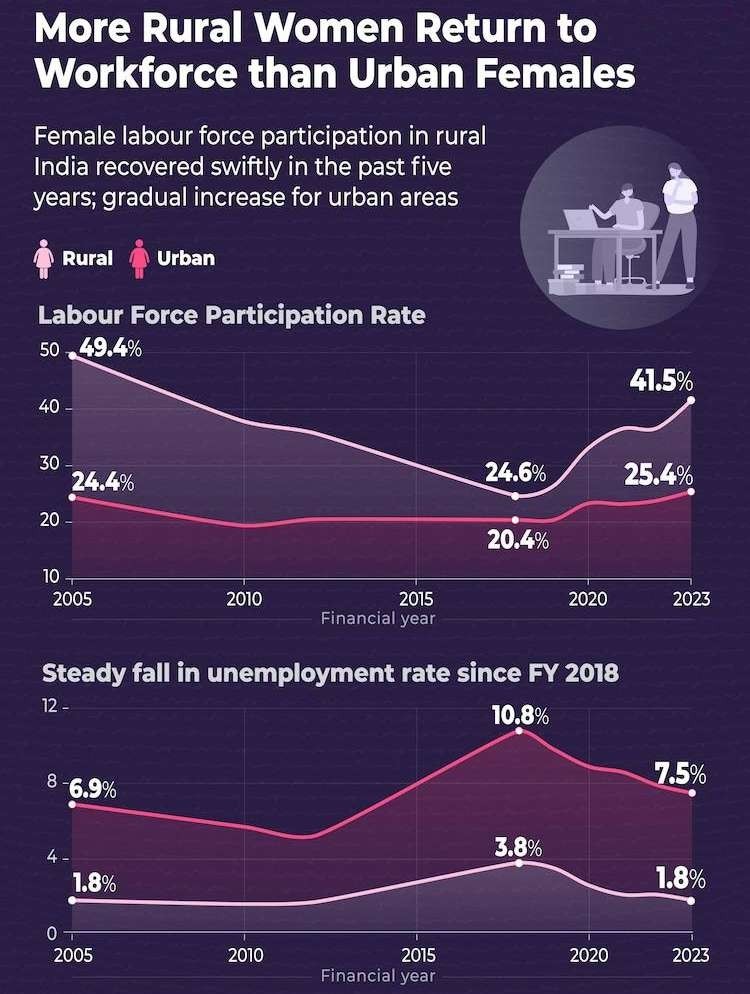

- According to the State Bank of India's latest report,if all the ladies doing their household chores for their family are paid for their job, then the amount paid to them would be equivalent to about 7.5 per cent of India's GDP.
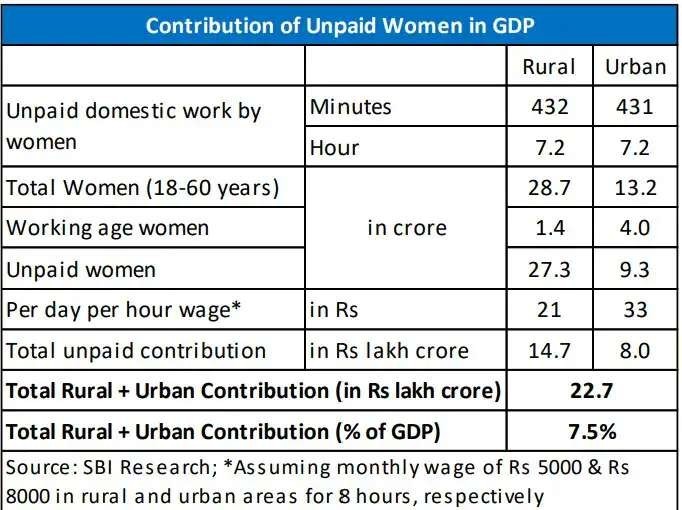

- A 2018 report by Mckinsey Global Institute showed that women’s contribution to India‟s economy is very low at 18 per cent, while it is 41 per cent in China, 40 per cent in Vietnam, 33 per cent in Japan, and 29 per cent in Sri Lanka.
- According to the National Institute of Rural Development and Panchayati Raj it is estimated that the GDP of India would increase by 43 per cent if women had the same work participation rate as men.
4.
What is the current status of women in various sectors?
| Sectors | Status |
|---|---|
| Women in Parliament |
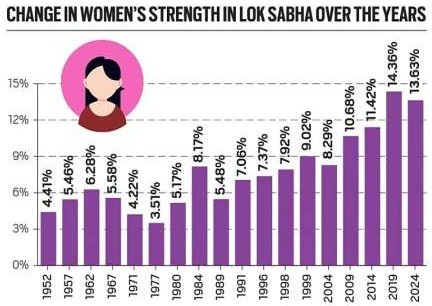 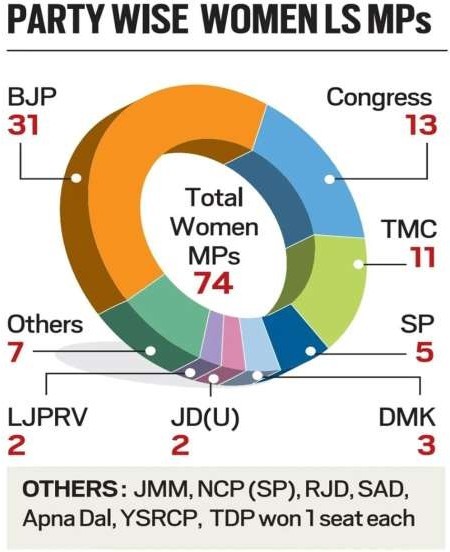 |
| Women in Legislative assembly |
 |
| Women in Government jobs |

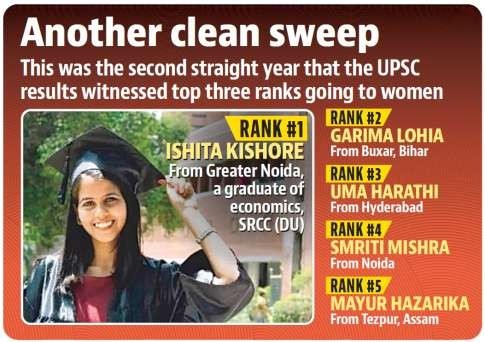 |
| Women in Judiciary |
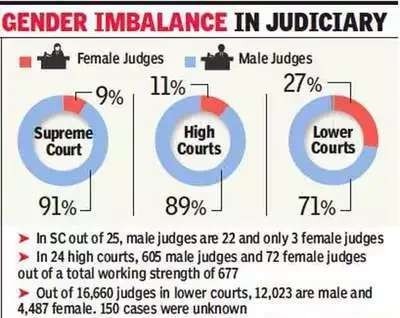 |
| Women in sports |
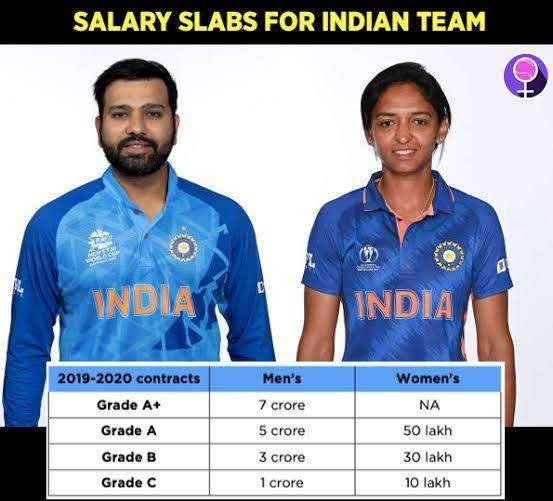 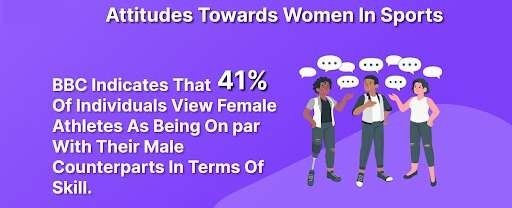 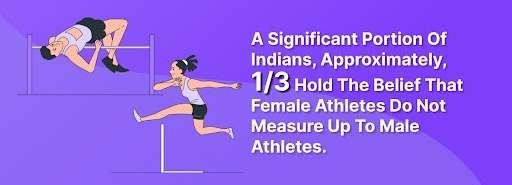 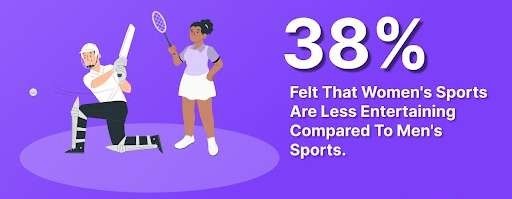  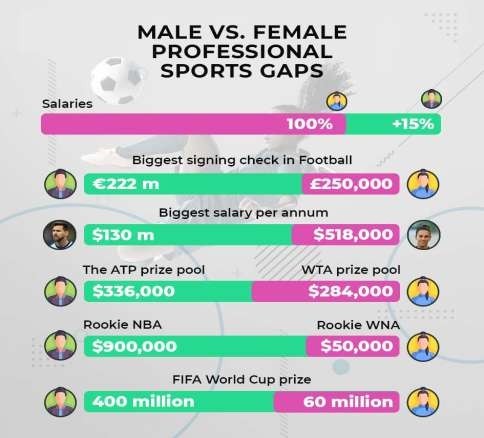 |
| Women in corporates |
  |
| Women in Financial Inclusion |
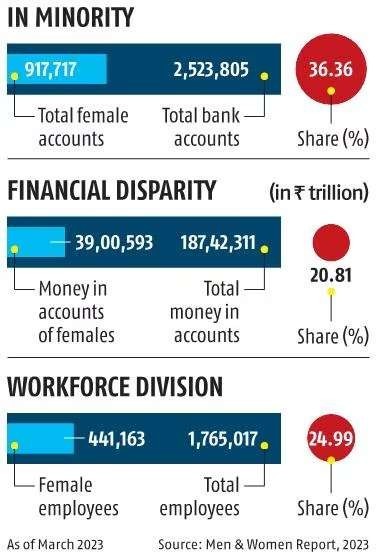 |
5.
What are social issues related to women?
| Issues | Analysis |
|---|---|
| Crime against women |
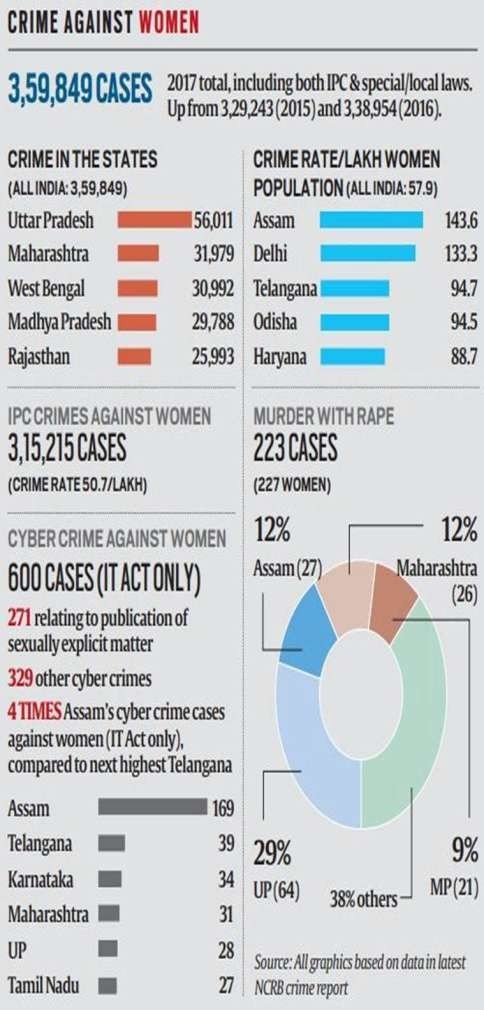  |
| Domestic violence |
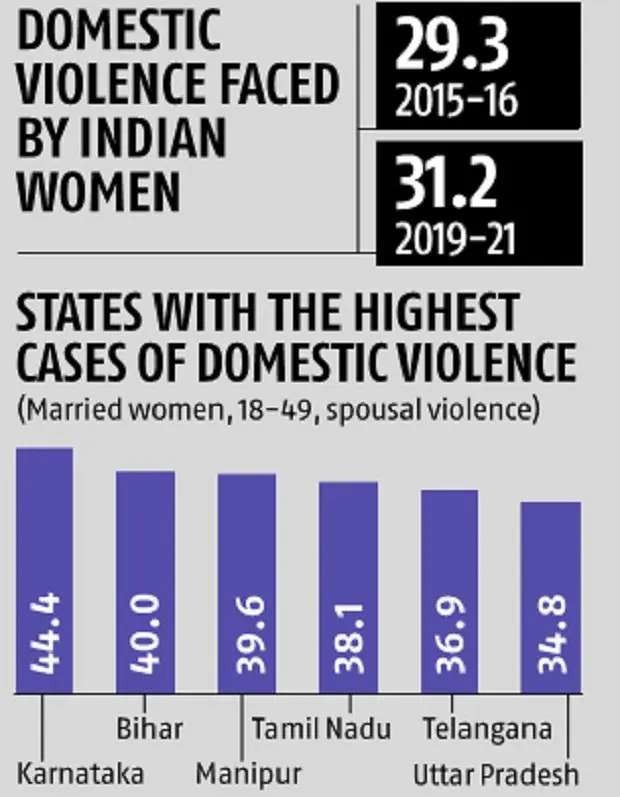 |
| Feminisation of Poverty |
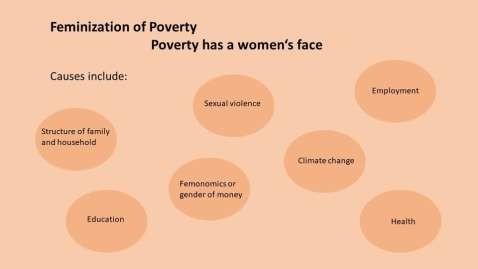 |
| Feminisation of Agriculture |
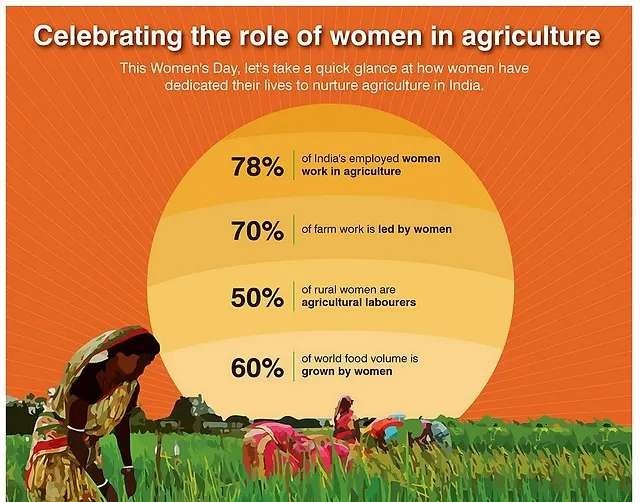 |
| Missing women and unwanted girls |
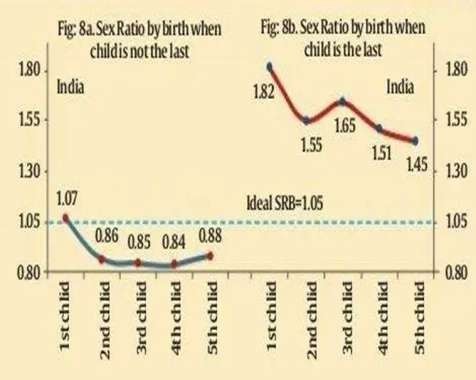 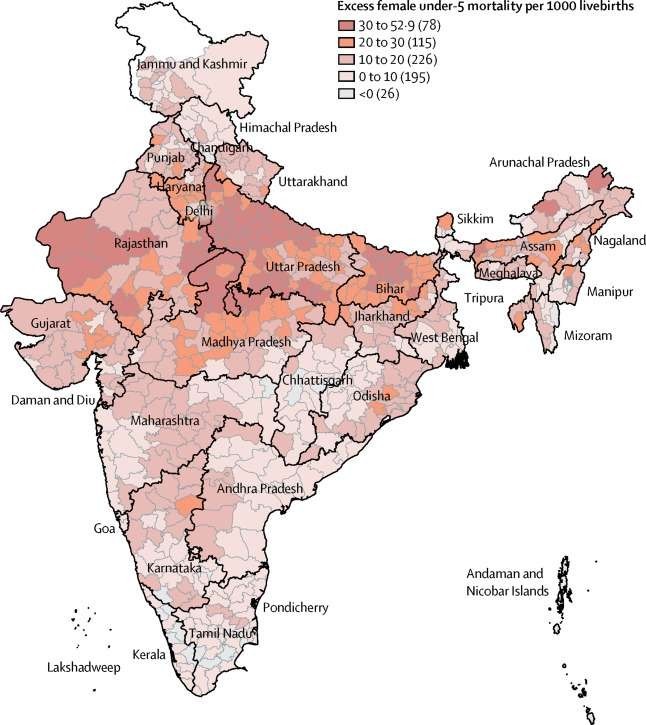 |
6.
Why are Indian women not able to reach the job market?
- India was 165th out of 187 countries in terms of female labour force participation rate in 2023, according to the World Bank's Gender Data Portal.
- India's female labour force participation rate was only 32.7 per cent.
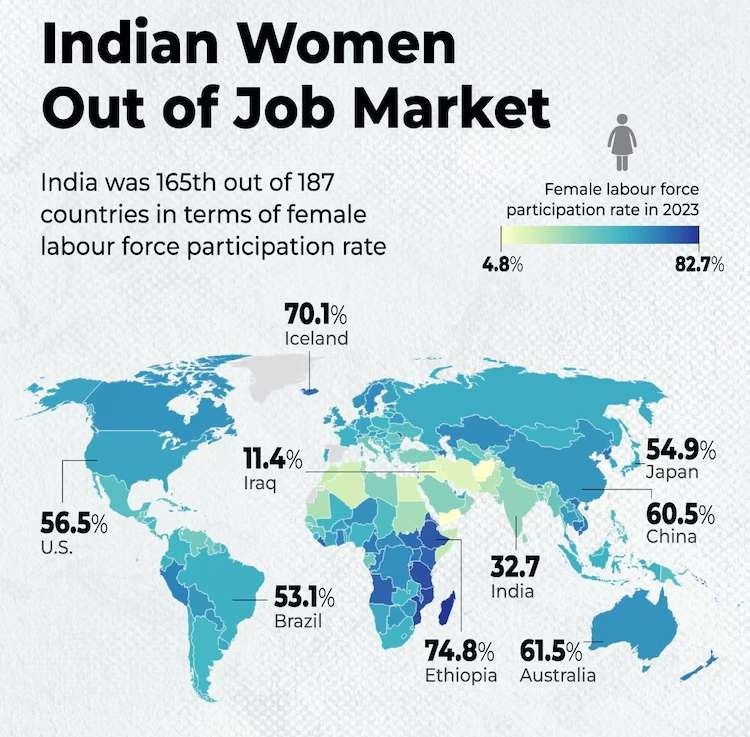

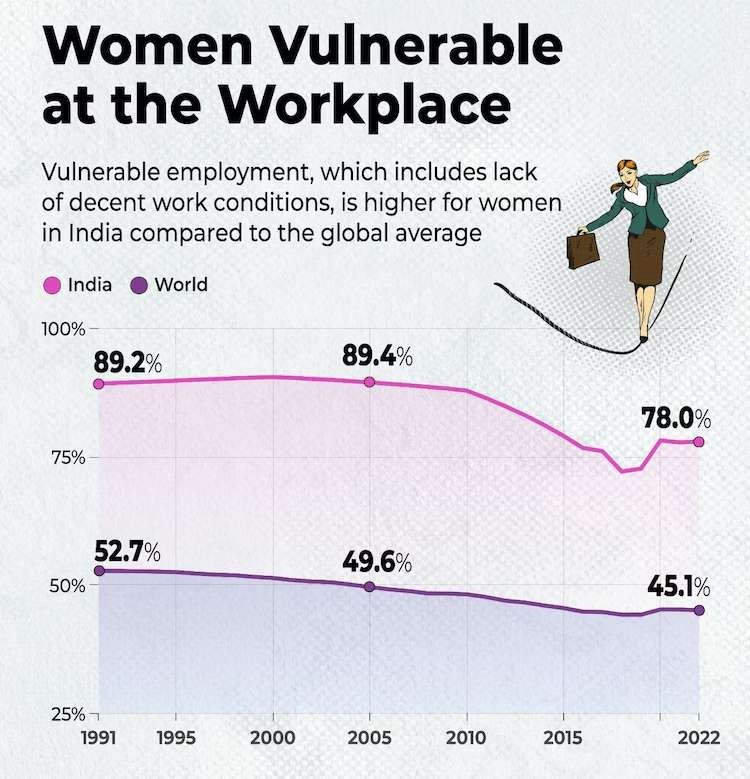

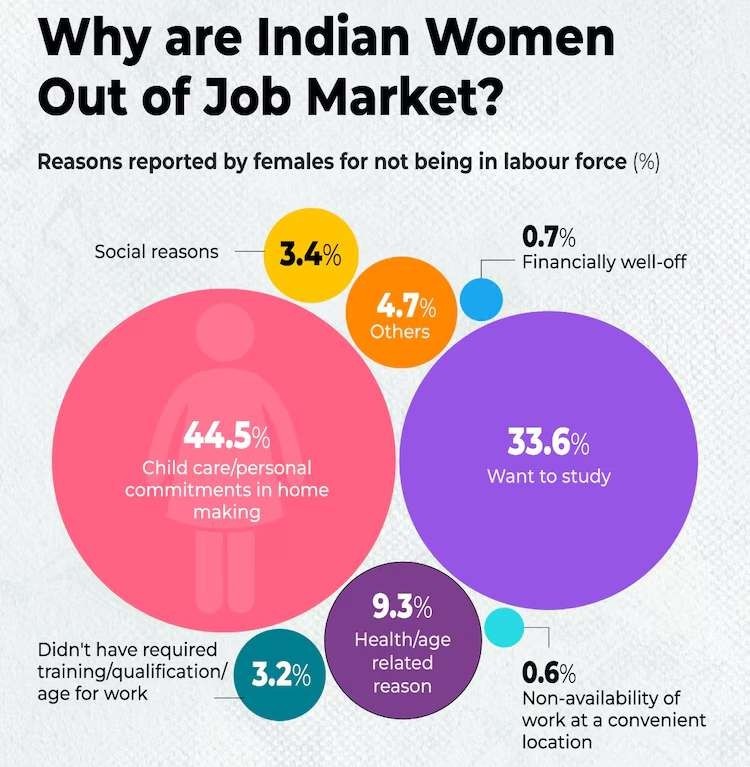
7.
Why is women empowerment necessary in India?
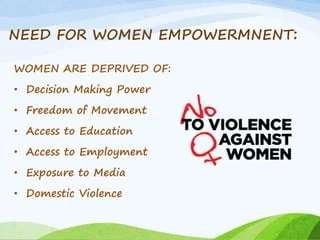
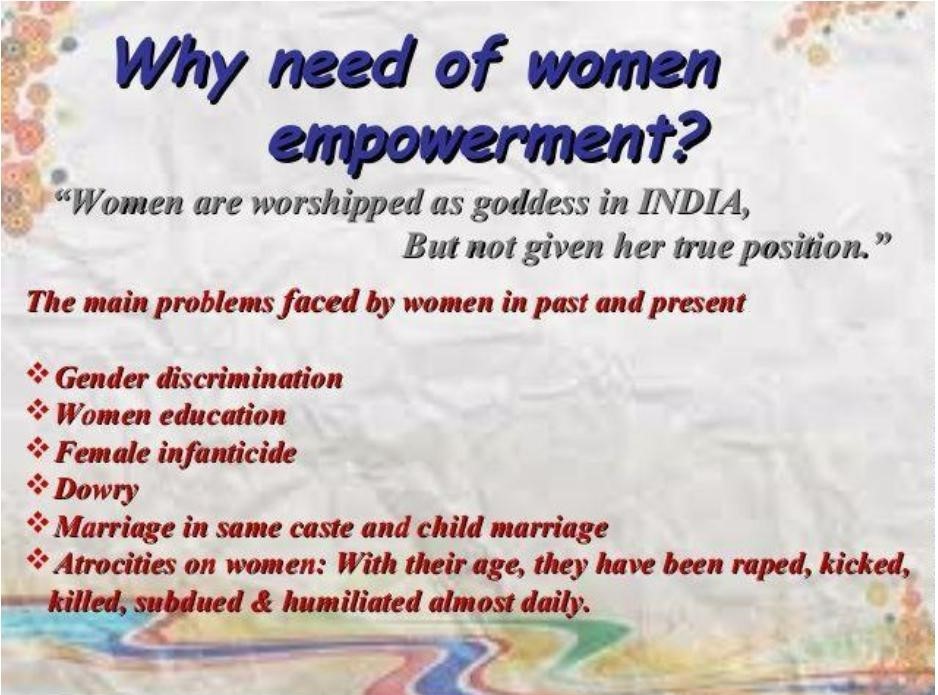
| Need for women empowerment | Analysis |
|---|---|
| Gender Equality |
|
| Economic Growth |
|
| Social Justice |
|
| Health and Wellbeing |
|
| Sustainable Development |
|
8.
What is the magnitude of crime against women?
- India recorded 22.8 lakh crimes against women between 2016 to 2021, of which about 7 lakh, or 30 per cent, were under Section 498A of IPC, as per the MoSPI‟s „Women and Men in India 2022‟ report released in 2023.
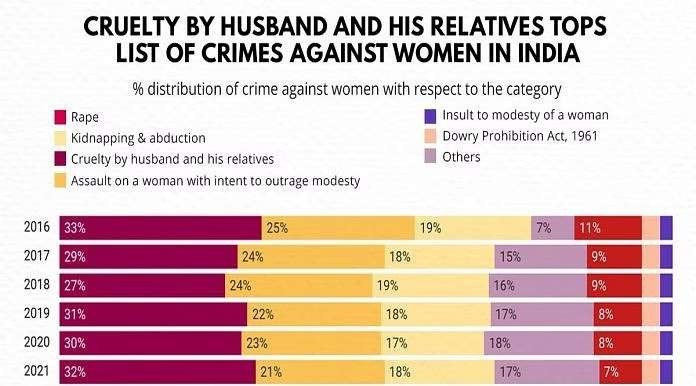
- The Women and Men in India 2023 report shows a rise from 359,849 cases in 2017 to over 445,000 in 2022, averaging 1,220 cases daily, averaging 51 First Information Report (FIRs) per hour.
- The National Family Health Survey-5 found that nearly one-third of women aged 15-49 in India have experienced some form of violence.
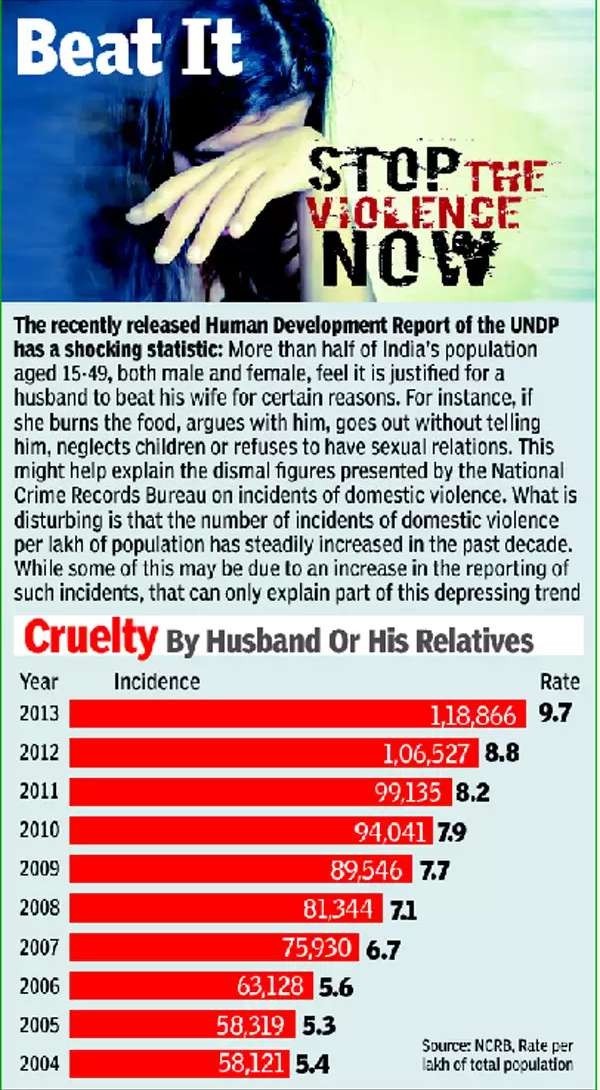

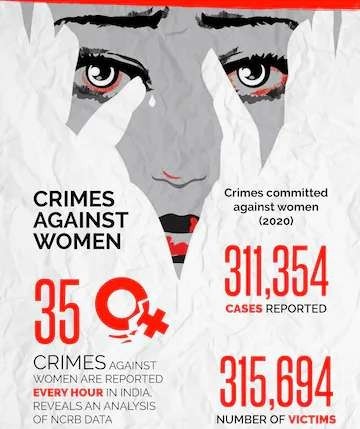

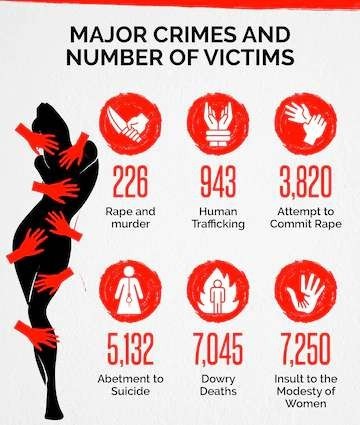

9.
Enlist few reasons for increasing rape in India?
1. Few female police:
- Studies show that women are more likely to report sex crimes if female police officers are available.
- India has historically had a much lower percentage of female police officers than other Asian countries.
2. Accepting domestic violence:
- Indian society sees domestic violence to be something deserving. UNICEF, in one of its reports, found that 57% of Indian boys and 53% of girls think that the beating of a wife is justified.

3. Discouragement of rape victims to compromise:
- Families in Indian society are not ready to accept the fact that someone in their family has been raped and they often advise the victims to stay away from the haphazard caused after rape in the police station.
- This is the sole reason why most of the rapes are not even registered in India.


10.
Enlist forms of sexual harassment at workplace?

11.
Enlist ways for ensuring women safety at the workplace?
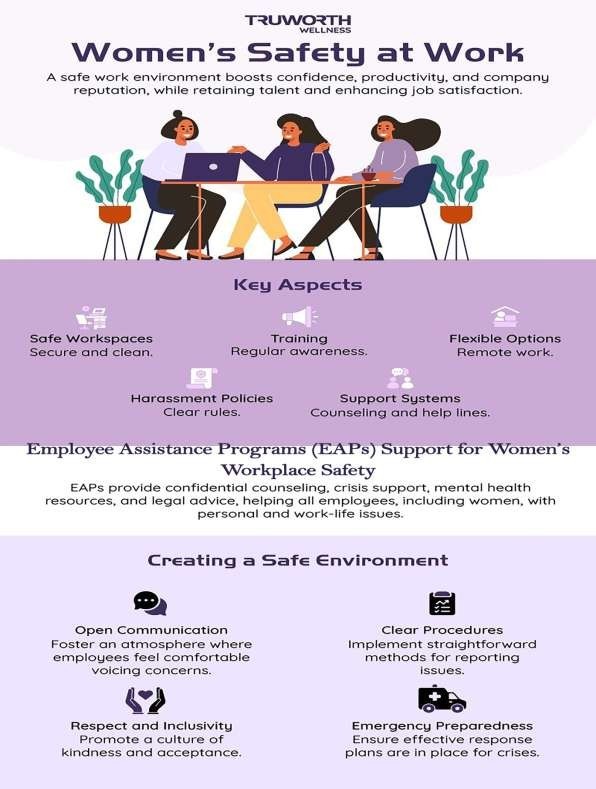
| Ways | Analysis |
|---|---|
| Sexual Harassment Policy |
|
| Create awareness among the employees |
|
| Encourage women to express |
|
| Role of an HR |
|
| Flexible Work Options |
|
| Internal Complaints Committee (ICC) on women‟s safety |
|
12.
What is the Beijing Declaration and Platform for Action?
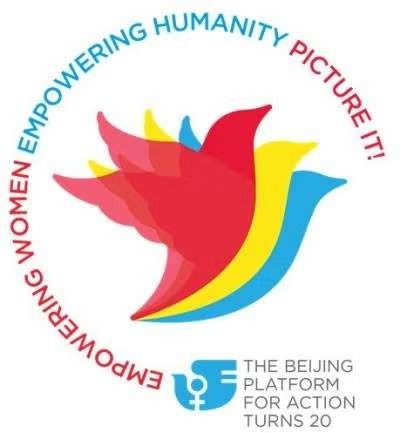
- The Beijing Declaration and Platform for Action is a global policy framework that outlines how to achieve gender equality and women's rights.
- It was adopted in 1995 at the Fourth World Conference on Women in Beijing.
- The 30th anniversary of the Beijing Declaration and Platform for Action is in 2025.
- The Platform of Action covers 12 critical areas of concern.
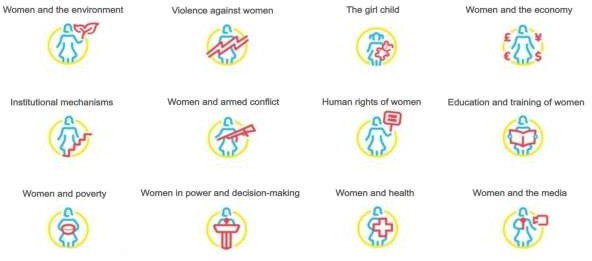
13.
Enlist initiatives for women empowerment in india?
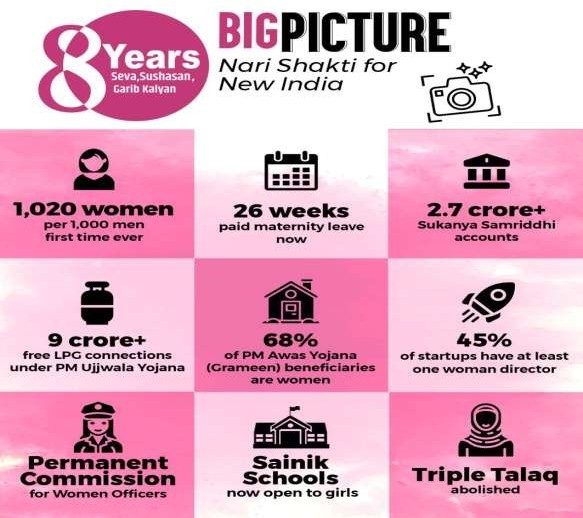
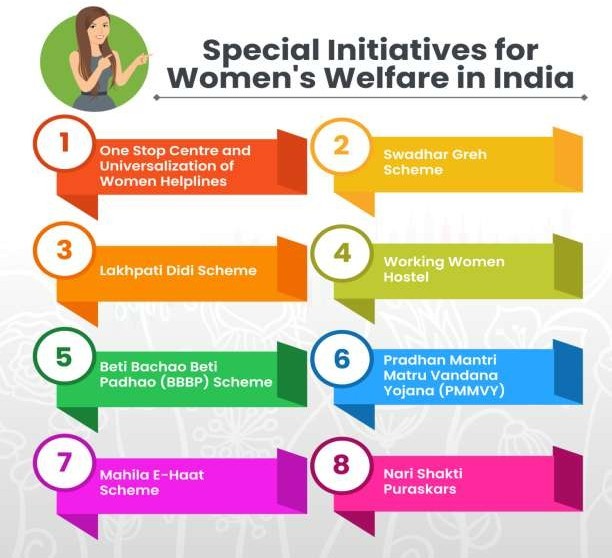
What is the relevance of the topic for UPSC CSE?
For Prelims: Crime Against Women, Gender Equality, National Crime Records Bureau's Annual Reports, Sexual Harassment At Work, Child Marriage, Dowry System, Vishakha Guideline, Supreme Court, Domestic Violence, Acid Attacks On Women, Pre-Natal Diagnostic Techniques Act 1994, Article 21, One Stop Centres, Mahila Police Volunteers, Investigation Tracking System For Sexual Offences, Justice Verma Committee, Representation of Women in Law Enforcement and the Judiciary.
For Mains: Significance of Government Policies & Interventions in Addressing Issues Related to Women,Reservation for women,Nirbhaya Fund,Fast track courts.
Some Previous Years Prelims Questions
Q1. Consider the following statements regarding ‘Nari Shakti Vandan Adhiniyam’:(2024)
1. Provisions will come into effect from 18th Lok Sabha.
2. This will be in force for 15 years after becoming an Act.
3. There are provisions for the reservation of seats for Scheduled Castes Women within the quota reserved for the Scheduled Castes.
Which of the statements given above are correct?
(a) 1, 2 and 3
(b) 1 and 2 only
(c) 2 and 3 only
(d) 1 and 3 only
Q2. Consider the following statements in the context of interventions being undertaken under Anaemia Mukt Bharat Strategy: (2023)
1. It provides prophylactic calcium supplementation for preschool children, adolescents and pregnant women.
2. It runs a campaign for delayed cord clamping at the time of child-birth.
3. It provides for periodic deworming to children and adolescents
4. It addresses non-nutritional causes of anemia in endemic pockets with special focus on malaria, hemoglobinopathies and fluorosis.
How many of the statements given above are correct?
(a) Only one
(b) Only two
(c) Only three
(d) All four
Some Previous Years Mains Questions
Q1. Distinguish between gender equality, gender equity, and women empowerment. Why is it important to take gender concerns into account in program design and implementation? (2024-10 Marks)
Q2. Globalization has increased urban migration by skilled young unmarried women from various classes. How has this trend impacted personal freedom and relationships with family?(2024- 15 Marks)
Q3. Is the National Commission for Women able to strategize and tackle the problems that women face at both public and private spheres? Give reasons in support of your answer.(2017-10 Marks)
Q3. Is the National Commission for Women able to strategize and tackle the problems that women face at both public and private spheres? Give reasons in support of your answer.(2017-10 Marks)
Q4. Discuss the positive and negative effects of globalization on women in India. (2015-15 Marks)
Q5. We are witnessing increasing instances of sexual violence against women in the country. Despite existing legal provisions against it, the number of such incidences is on the rise. Suggest some innovative measures to tackle this menace. (2014-10 Marks)
Some Questions from This Year and Previous Years Interview Transcripts
Board Dinesh Dasa sir:
- You did schooling in Delhi majorly and lived in an urban setting.
- How will you cater to rural women?
- Enlist a few Schemes for women by the government of India.
- What is gender budgeting?
Board Dinesh Dasa sir:
- Which women have influenced you in life?
- Why are all female candidates saying kiran shaw Majumder and last year all were saying priyanka chopra. Why?
Board Sanjay Verma sir:
- Women's role in Bengal Renaissance?
Board Lt Gen Raj Shukla sir:
- Why are we facing this issue of women not contributing much to the economy?
- What can be done to improve?
- How can their condition be improved?
Board Sheel Vardhan Sir:
- Issues faced by women in the armed forces specially the combat forces.
- Can women be at the forefront during a battle.
Some Questions for QUIZ
Q1. Consider the following indexes:
1. Gender Inequality Index (GII)
2. Women's Empowerment Index (WEI)
3. Global Gender Parity Index (GGPI)
4. Women, Business and the Law (WBL) index
How many of the above indexes are released by the World Economic Forum (WEF)?
(a) Only one
(b) Only two
(c) All three
(d) None
Some Questions for POLL
Q1. Do you think women in India are truly empowered?
(a) YES
(b) NO
(c) Can’t say
Q2. Can capital punishment help in reducing rape?
(a) YES
(b) NO
(c) Can’t say